The Vikings were adventurous, fearless, ruthless, barbaric, curious, tough. We have many assumptions of these warrior merchants, who supposedly pillaged and raped their way through the British Isles, sacked Paris more than a few times and even ended up as bodyguards for the Byzantine emperors. In just a few hundred years – from around 800 to 1050 – they shaped the political map of Northern Europe and until this day continue to inspire us.
Although the Vikings are regarded as brutal ransackers, many sources show that their invasions were actually retaliation against the intrusion of Christian missionaries or that they were motivated by overpopulation and a lack of viable farmland. They just chose the wrong people to loot: The ones that recorded the events and history of times past. The monks.
In Denmark, their heritage lives on. In the places they once inhabited, in the museums that portray the contrasted life of the Vikings. And in the heart of every Dane.
Take a journey in the Footsteps of the Vikings in Denmark and discover where to learn more about these bold seafarers on the peninsula of Jylland and the island of Fyn.
Aros
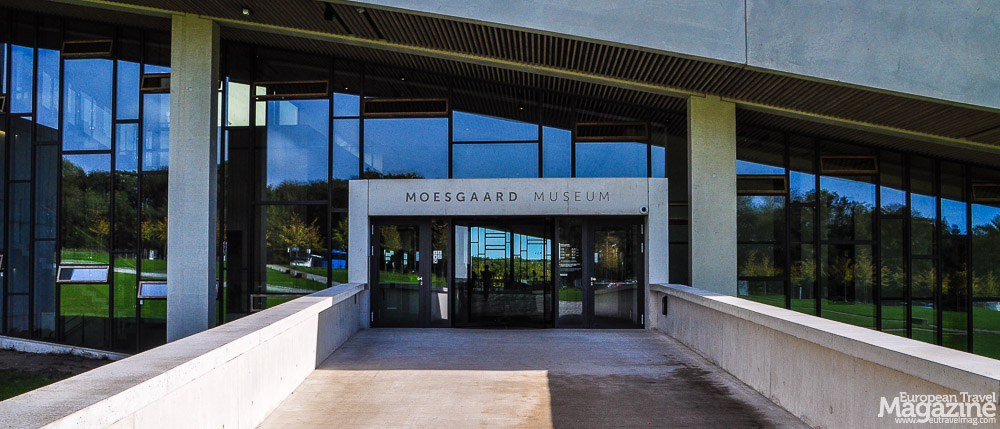 Aros – or Aarhus as it’s called today – appears in the late 700’s and is thus the second oldest city in Denmark. The city is a few decades younger than Ribe and Hedeby (which no longer exists). Aros is also unique in Scandinavia, because the city centre still lies as it did 1200 years ago.
Aros – or Aarhus as it’s called today – appears in the late 700’s and is thus the second oldest city in Denmark. The city is a few decades younger than Ribe and Hedeby (which no longer exists). Aros is also unique in Scandinavia, because the city centre still lies as it did 1200 years ago.
There are two places in Aarhus you can go exploring its Viking heritage: In the petite museum Vikingemuseet, that lies in the basement of Nordea Bank on St. Clemens square and at Moesgaard Museum, that re-opened in 2014 in a wonderful, new building and tells the most exciting tale of the Vikings in Denmark.
Moesgaard Museum is interactive, playful and informative. It uses new technology to tell the story about the Viking era and Denmark’s prehistory. We especially enjoyed that you can take a “key” upon entering the Viking sections of the museum. Depending on which key you have chosen ( e.g. Hukuin the Carpenter, 12-year-old Arne, Queen Tove etc.) the info panels tell different stories, relating to your chosen character. The museum will impress with its imposing architecture and delight visitors of all ages due to its enlightening exhibition. A great place – if not he best place in Denmark to get to know more about the Vikings.
Fyrkat
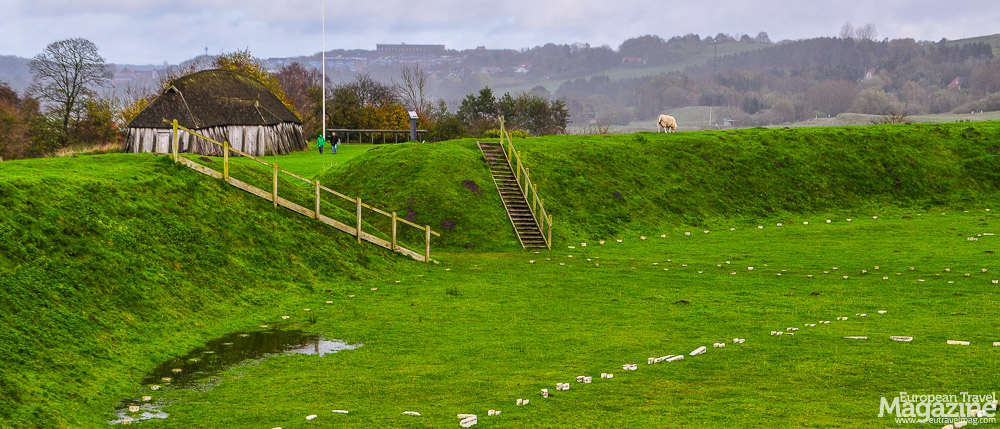 Fyrkat is one of the few examples of a former Viking ring castle, dating from around 980 AD. Built during the reign of king Harald Bluetooth on a narrow piece of land, the castle would have enabled control of the traffic on the main land route between Aalborg and Aros – nowadays Aarhus.
Fyrkat is one of the few examples of a former Viking ring castle, dating from around 980 AD. Built during the reign of king Harald Bluetooth on a narrow piece of land, the castle would have enabled control of the traffic on the main land route between Aalborg and Aros – nowadays Aarhus.
None of the original five Danish ring castles survived the toll of time, but on Fyrkat, a bank of earth marks where the ringed castle surrounded the original 16 country houses.
Connected to the ring castle, lies Vikingecenter Fyrkat, a little Viking village that comes alive from the middle of April to end of September. For an entry fee you can walk around nine reconstructed houses, that look like they would have around Harald Bluetooth’s time. The workshops offer many Viking activities every summer, a small museum tells the story of the Viking age and the youngsters can even dress up like Vikings.
Outside the opening season of Vikingecenter Fyrkat, in winter and early spring, it’s possible to visit the earth embankment, that marks Fyrkat, for free.
Lindholm Høje
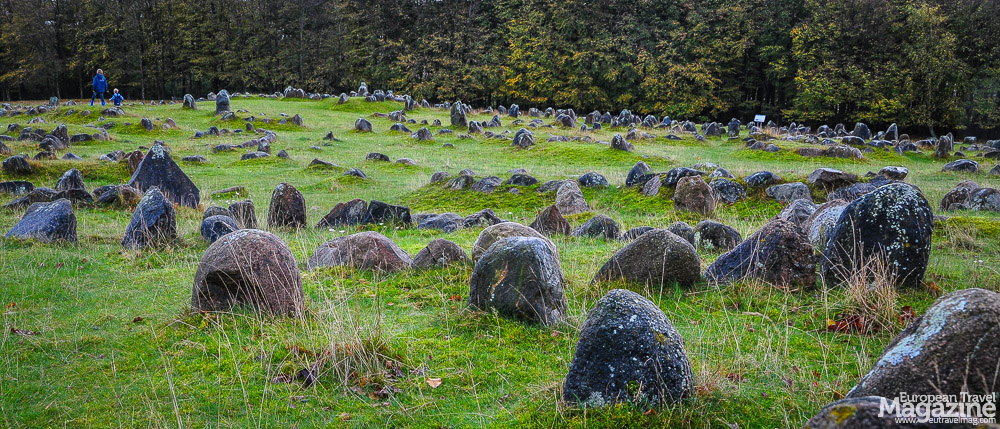 If you have ever witnessed a classic, Viking funeral, the scene would probably have involved a boat, where the dead Viking was placed among his earthly riches, perhaps even beside the corpse of his favourite horse and a few slaves. The boat would’ve drifted from land and set on fire by a flaming arrow from the funeral party. And so, the Viking would’ve reached Valhalla, the Viking paradise behind the rainbow bridge of Bifrost to forever fight every day and drink every night. A Viking dream come true.
If you have ever witnessed a classic, Viking funeral, the scene would probably have involved a boat, where the dead Viking was placed among his earthly riches, perhaps even beside the corpse of his favourite horse and a few slaves. The boat would’ve drifted from land and set on fire by a flaming arrow from the funeral party. And so, the Viking would’ve reached Valhalla, the Viking paradise behind the rainbow bridge of Bifrost to forever fight every day and drink every night. A Viking dream come true.
There was a time in Denmark, though, where the Vikings weren’t buried at sea, but in the ground. At Lindholm Høje there are no less than 700 graves and a few hundred stone ships. Stone ships are graves, or cremation burials, that are surrounded by slabs or stones in the shape of a ship, as to symbolize the sea burial.
It’s a fascinating to walk between the many stones and imagine how the stunning view of Limfjorden has changed yet remained the same in the thousand years that’ve passed since our forefathers stood on this very spot, mourning the death of a loved one. It’s free to stroll around Lindholm Høje, but we can recommend a visit to the museum, that tells a fascinating story about Viking burials and antiquity in the land of Limfjorden.
Aggersborg
 Just like Fyrkat, Aggersborg is one of the few surviving examples of a Viking ring castle, dating back to Harald Bluetooth. But this one is actually the largest one in Denmark with an internal diameter of 240 metres. and just like with Fyrkat, you can only see the structure and earth embankment – no fancy ring castle actually survived the toll of time.
Just like Fyrkat, Aggersborg is one of the few surviving examples of a Viking ring castle, dating back to Harald Bluetooth. But this one is actually the largest one in Denmark with an internal diameter of 240 metres. and just like with Fyrkat, you can only see the structure and earth embankment – no fancy ring castle actually survived the toll of time.
Aggersborg is free to visit – as well as the tiny museum, or information cottage that tells the story of Aggersborg from its Viking adolescence until present day. And if you download this app for Android or iPhone, you can actually see how the castle looked back in Viking times.
Jelling
 In the 10th century, at the highest point in the countryside west of Vejle, the kings Gorm the Old and Harald Bluetooth created a couple of UNESCO World Heritage classed monuments, that survived history. The oldest feature is the remains of a huge stone ship, a shape you might recognize from Lindholm Høje. And yes: just like the ones at Lindholm Høje, this was used as burial ground. And as the size might suggest: fit for a king and queen. Harald built two huge mounds; one for his father Gorm and the other for his mother Thyra and placed these mounds inside the stone ship.
In the 10th century, at the highest point in the countryside west of Vejle, the kings Gorm the Old and Harald Bluetooth created a couple of UNESCO World Heritage classed monuments, that survived history. The oldest feature is the remains of a huge stone ship, a shape you might recognize from Lindholm Høje. And yes: just like the ones at Lindholm Høje, this was used as burial ground. And as the size might suggest: fit for a king and queen. Harald built two huge mounds; one for his father Gorm and the other for his mother Thyra and placed these mounds inside the stone ship.
Other famous monuments are the so-called Jelling stones; two massive carved rune stones that celebrate the legacy of the two Viking kings. The larger one is popularly dubbed “Denmark’s baptismal certificate” as it shows a crucified Christ and boasts how Harald Bluetooth converted the Danes to Christianity. Both stones are protected by a glass casing and can be viewed for free.
The museum Kongernes Jelling is also free to visit and forms part of Denmark’s National Museum. Here, you can learn all about the stone ship, the Jelling stones, how the present Queen of Denmark, Margrethe II can trace her ancestry back to Gorm the Old and find out more about the Vikings. It’s a fairly new and interactive museum and a “must” in your quest for knowledge about the Vikings.
Ladby
 We’ve seen a couple of Viking land burials now, but how about a fabled Viking burial at sea?
We’ve seen a couple of Viking land burials now, but how about a fabled Viking burial at sea?
Well, we can’t exactly experience “the real deal” as it would either have burnt or be lost at sea. The next best thing is Ladby Ship; the only Viking ship grave in Denmark. Located near Kerteminde, in the north of Funen, Vikingemuseet Ladby tells the story about this VIV (Very Important Viking) burial that took place around 925 AD. A huge ship was pulled ashore, a Viking king laid on a feather quilt, surrounded by eleven sacrificed horses and four dogs and then the ship was placed inside a huge burial mound.
It’s possible to visit the remains of the ship in its original mound, and you can actually see the relics of the horse skeletons and get a sense of the importance of this burial. The museum also has a reconstructed version of the Ladby Ship docked by the fjord below the burial mound, as well as containing the treasures and archaeological findings of the burial grounds.
Bork
 Every year from April 1st to the end of October, the reconstructed Viking village of Bork comes alive when Vikings come and re-occupy the recreated houses, work with Viking-age crafts and other historical chores.
Every year from April 1st to the end of October, the reconstructed Viking village of Bork comes alive when Vikings come and re-occupy the recreated houses, work with Viking-age crafts and other historical chores.
Bork Vikingehavn demonstrates how the Vikings lived on the rugged west coast 1.000 years ago. The village and the harbour are built around various findings from the Viking Age’s West Jutland and in particular the archaeological excavations in the surrounding areas have inspired Bork Viking Harbour’s building style.
At Bork Vikinge Havn you will also find a café and a large museum shop. They also have interesting exhibitions about Viking life and the marvellous, handmade “Bork Tapestry”. You can play Viking games, make your own leather pouch, shoot arrows at 3D targets and buy beautiful pearls. All through the year they organise several events with the annual Viking market as the highlight.
It’s a fun day out for the whole family and a great way for kids to discover how the Vikings lived.
Ribe
 On the west coast of Denmark, the first extant city in Denmark – Ribe – naturally also has a Viking story to tell.
On the west coast of Denmark, the first extant city in Denmark – Ribe – naturally also has a Viking story to tell.
When Norse Vikings went to pillage Lindisfarne in 793 and spawned the Viking Age, they had actually been in Ribe right from its tentative beginning as a city in the beginning of the 700s. Archeologists have found Norse antlers, used to make combs, dating back to the 700s and this might suggest that Norse Vikings first travelled and interacted as merchants.
You can learn more about the Vikings of Ribe either at the town museum Ribes Vikinger or at Ribe Vikingecenter; a heritage centre presenting authentic reconstructions from 710-980 AD. Ribe VikingeCenter is a great choice if you have kids, since they offer offers activities and drama every day. For instance, you can try your aim at archery, bake a flatbread, join in the Viking warrior training (for children), learn Viking games and much more. However, unlike Ribes Vikinger, that’s open all year round, Ribe Vikingecenter is only open from the end of April to middle of October.
Hedeby
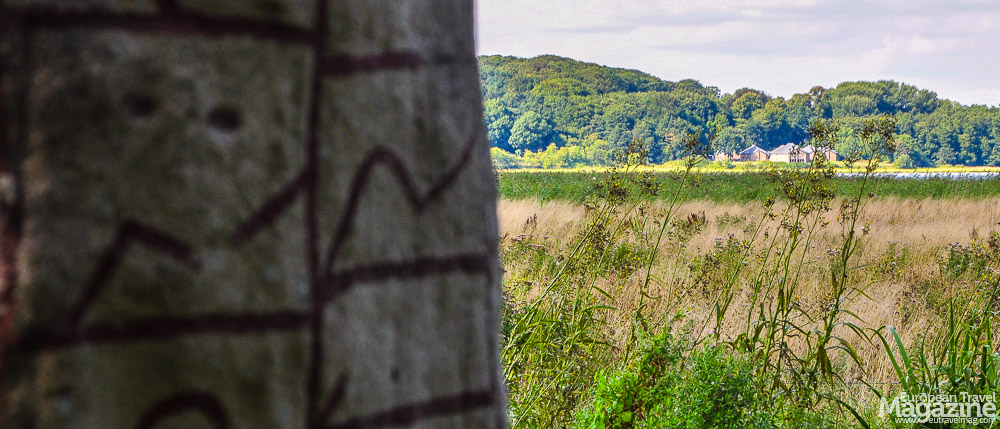 The last Viking stronghold we’re going to share with you used to be in Denmark but hasn’t been on Danish soil the last hundred years. Hedeby is now called Haithabu and is situated near Slesvig, around 40 kilometres south of the Danish border in Germany.
The last Viking stronghold we’re going to share with you used to be in Denmark but hasn’t been on Danish soil the last hundred years. Hedeby is now called Haithabu and is situated near Slesvig, around 40 kilometres south of the Danish border in Germany.
Hedeby was one of the first cities in Denmark, probably dating back to 770, and during the Viking age it became Scandinavia’s most central and significant commercial centre with the Baltic Sea as a connecting interface. The settlement is nestled at the head of a narrow, navigable inlet which connects to the Baltic Sea. Safe from harm and yet close to the main thoroughfare: a combo that speaks to any commuter being either Viking or worker.
Hedeby is so important, that is was included on the UNESCO World Heritage list in 2018 and there are no less than 4 reasons to visit: The educational Wikinger Museum Haithabu, its reconstructed Viking village (only open during spring and summer), the wonderful setting with the option to hike around “Haddebyer Noor” and last – but certainly not least – the top-notch museum café (also open from April to end of summer).
There’s something exciting to do for a curious visitor regardless of age, whether it’s examining the treasures found on this former trading metropolis, learning how the natural herbs and minerals were used to colour the garments, shooting with bow and arrow at a mark, making your own “Thor’s Hammer” necklace and sampling Viking dishes. Or beer. Hedeby turns out to be almost as good as Valhalla.
Learn more
There are more Viking sites to discover on Zealand, which we have covered in the article In the Footsteps of the Vikings: East Denmark. But there are lots of other things to do if you’re in Denmark. If you are in the northern part of Jutland you MUST visit Skagen – here’s our take on Top5 Things to do in Skagen. If you’re in Zealand, how about following in the footsteps of The Kings of the North to find out how royalty shaped this part of Denmark in the Middle Ages.
Here are some more useful links if you want to dig deeper into Denmark – or Vikings!
- VisitDenmark official Tourism website
- VisitDenmark’s guide to Top10 Viking sites
- Vikings on Wikipedia
- Viking Age on Wikipedia
,









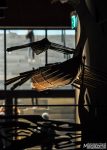

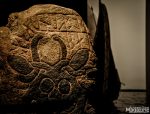
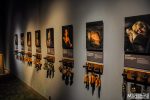
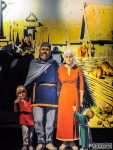



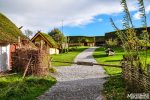







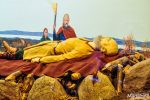





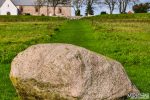
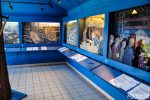






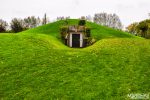


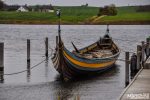
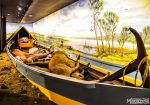


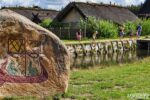
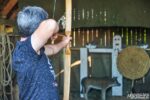

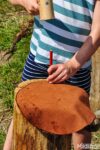





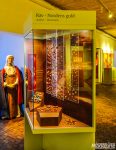








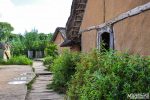


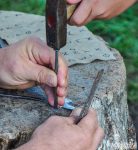
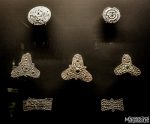



I remember when in Copenhagen, in the National Museum of DK, and I was thrilled about the viking jewelry, the women ornaments, the horns, so exquisitely beautiful!!
Yeah, I just love the intricate design of Viking jewelry too!
Went back to my parents home land Danmark. Took my 15 year old son with me. We went to Ladby, Jelling, Lindholm Hoje, Furkat, I have to say that we in joyed all of these places. I would also tell people to visit egeskov castle, King Rosenborg castle and the new war museum in Copenhagen
Thanks for your feedback Peter – and thank you for the other suggestions!